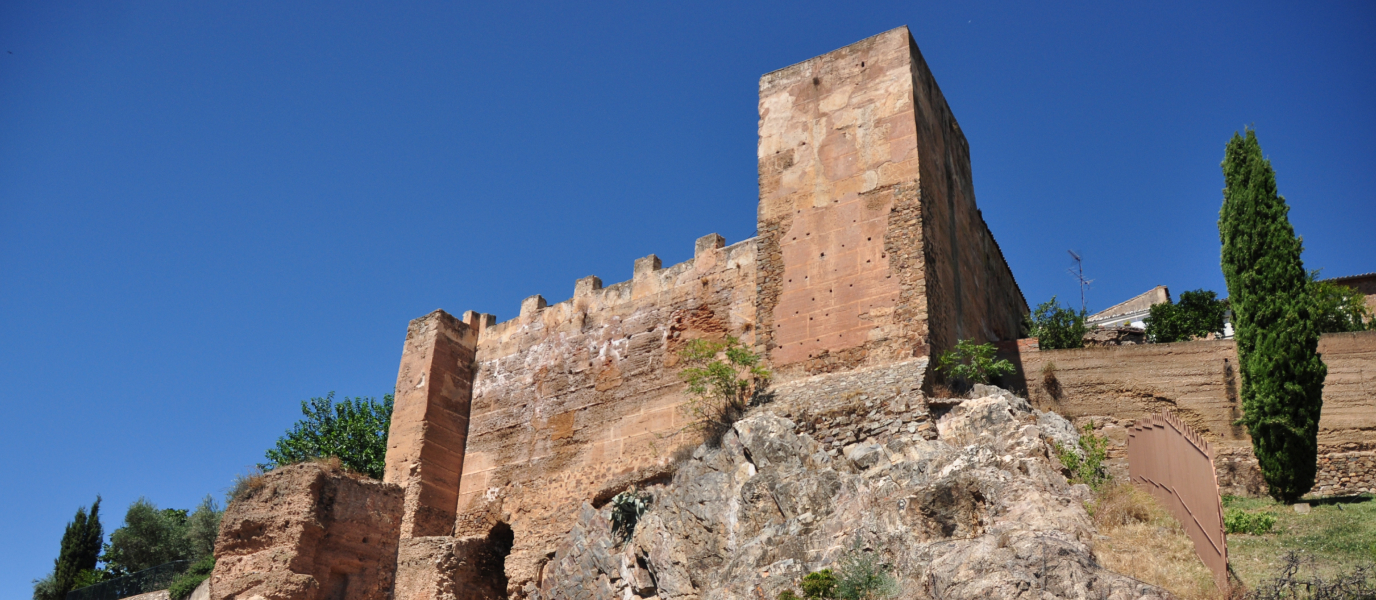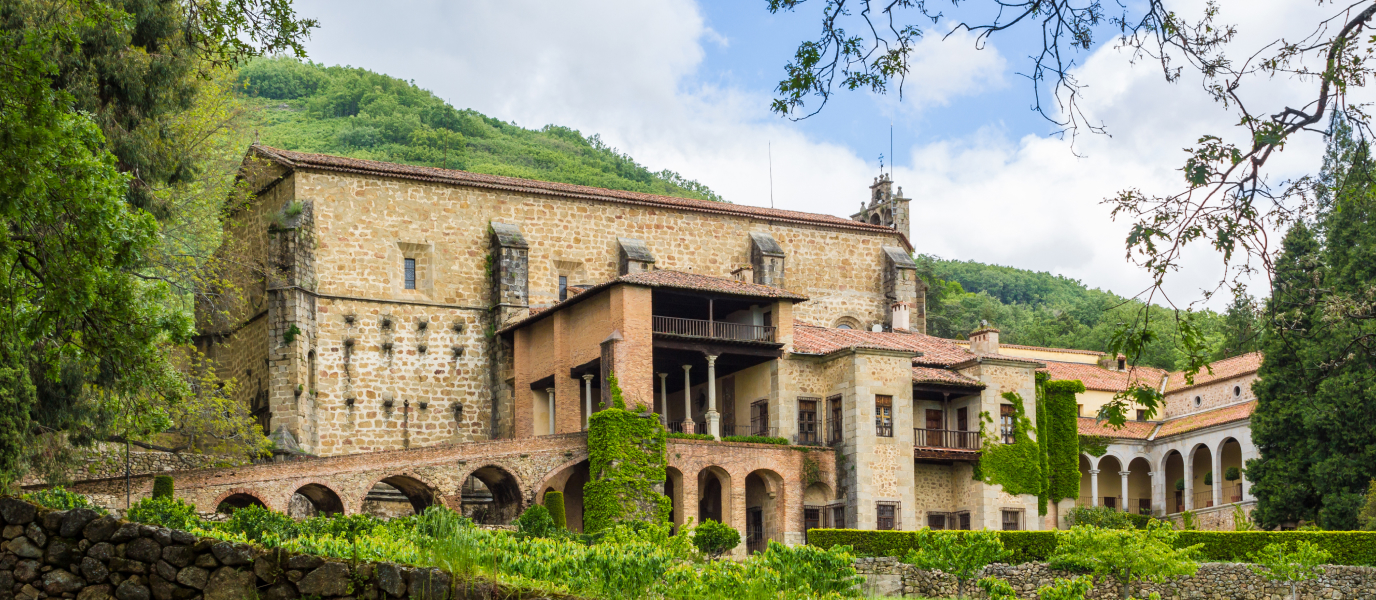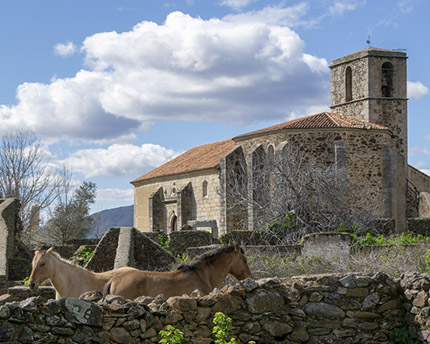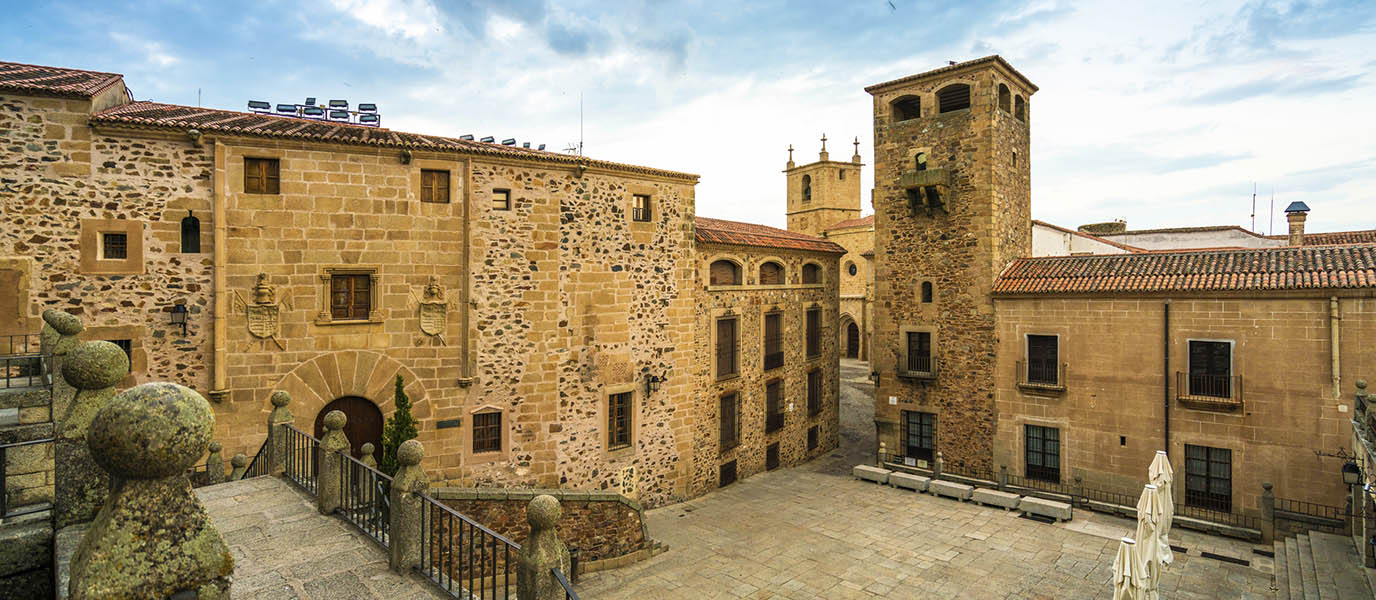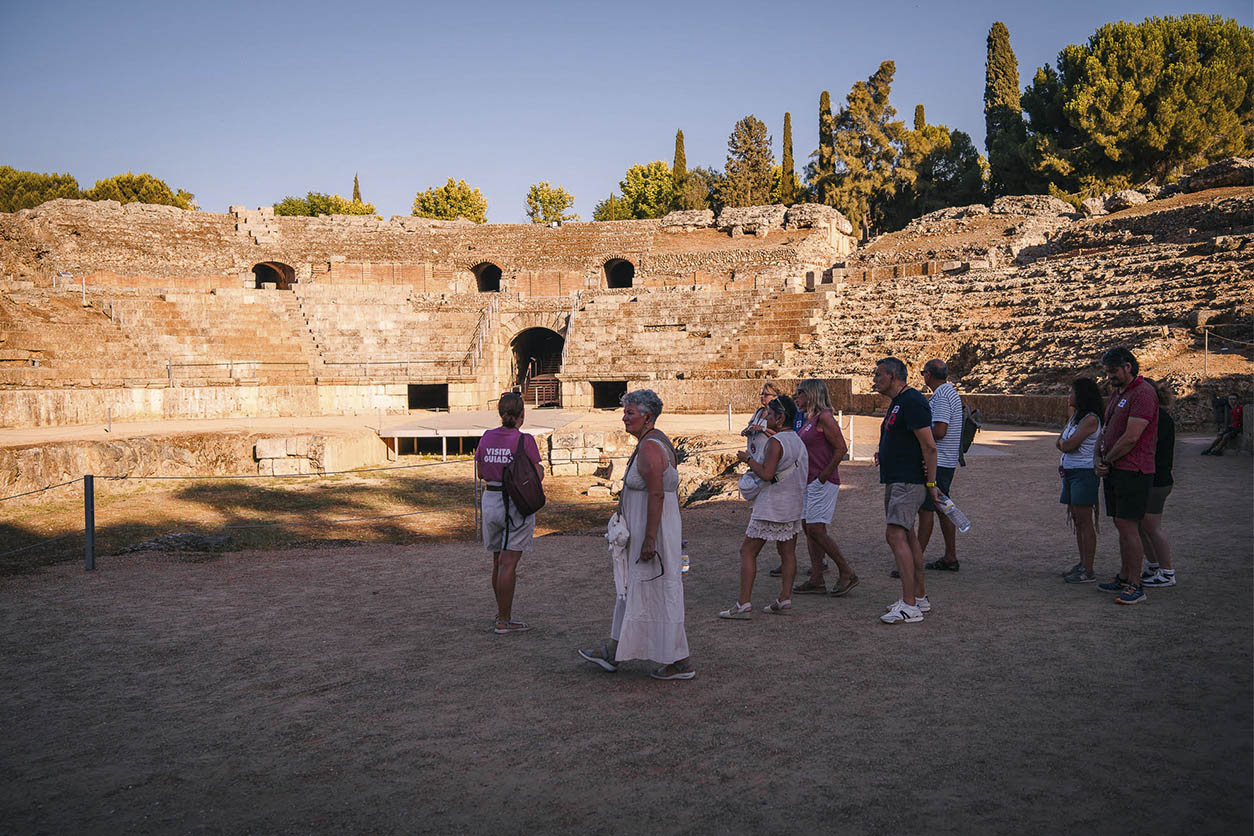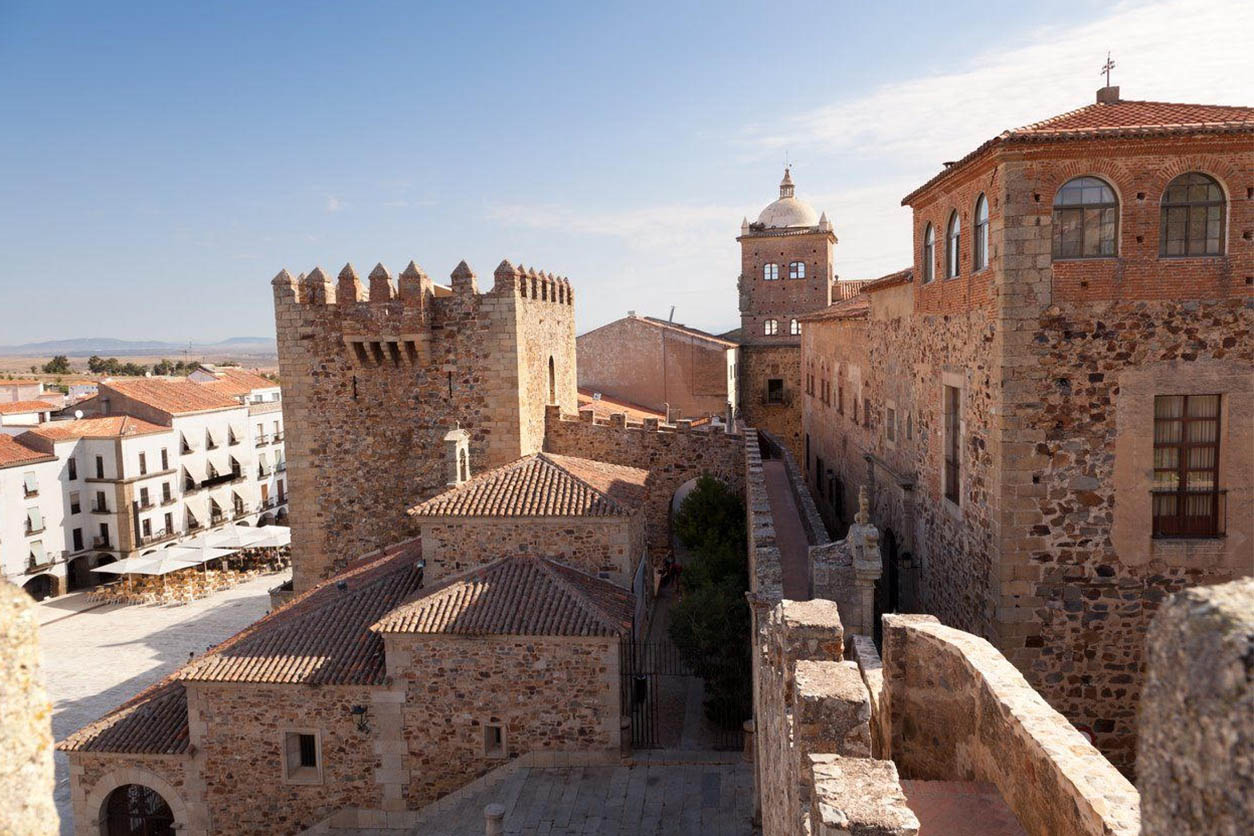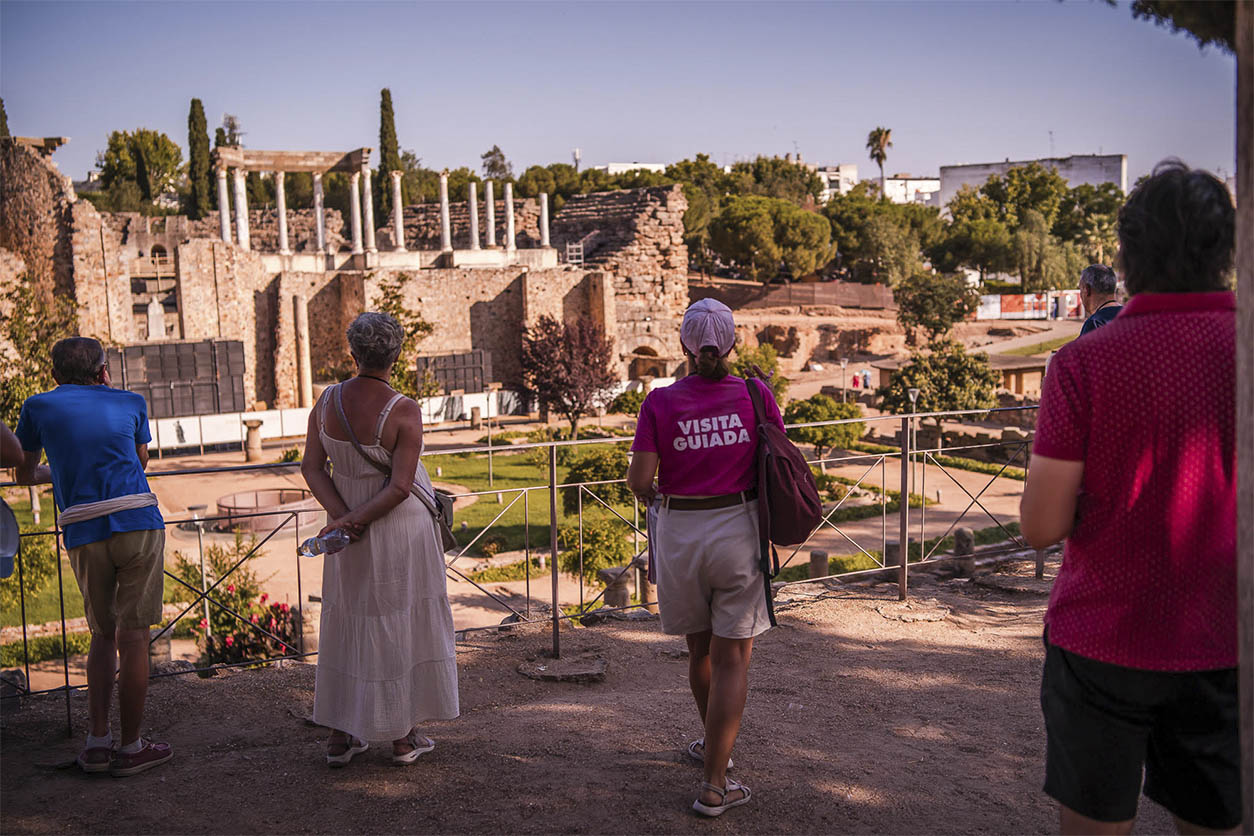The Baluarte de los Pozos is a must-see on any visitor’s itinerary in Cáceres since it gives an excellent idea of what kind of city it was under Moorish rule in the 12th century.
According to legend, during one of the many sieges of the city by the invading Christians the daughter of the local ruler, Princess Jasmine, caught sight of a handsome soldier from her window and immediately fell in love with him. With the help of a servant, Jasmine was able to meet with her lover by sneaking through a secret tunnel that went from the water cistern to the river. However, after one such rendezvous, the soldier followed her and learned about this tunnel. The Christians did not take long to capture the city. When the local ruler asked the Christians who had betrayed the city Jasmine confessed and threw herself from a nearby balcony. However, they say that as she was falling, she transformed into a golden hen who, every Saint John’s Day, still appears at the fountain called Fuente Fría. Though another story suggests that she fell into the water cistern beneath the tower and ‘sleeps there forever in its waters’.
The bastion tower
The bastion was actually an extension of the original Moorish fortress and it was made up of two separate towers called La Coracha, of which practically nothing survives, and the Torre de los Pozos or ‘la del Gitano’.
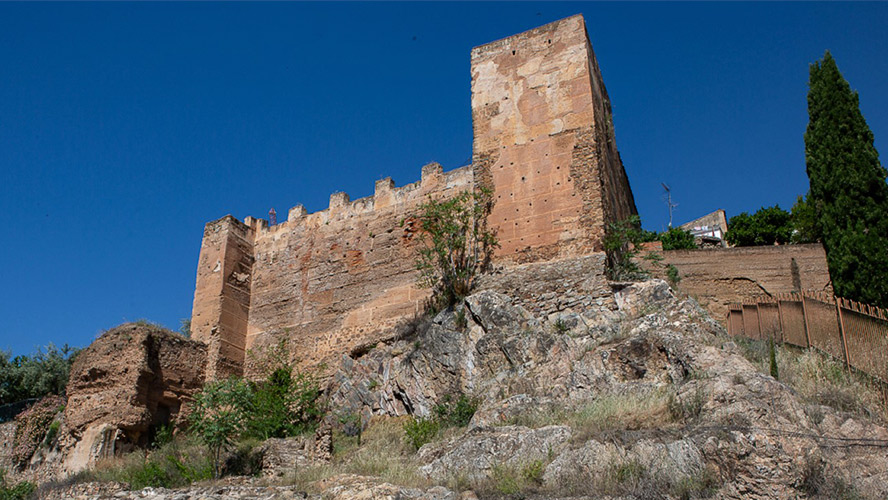
Located on the western side of the defensive wall, the tower was built on a rocky outcrop over original Roman foundations. It was connected to the nearby tower and the wall by a series of walls that made a trapezoid shape that followed the flow of a local stream. The tower was unusually decorated for a military installation of the time, bearing 8-pointed stars and inscriptions in the Kufic calligraphy popular among the Moors of the time. It is believed that this decoration was intended as a form of propaganda at the time.
Near the Bastion of Cáceres you can find the San Roque water cistern, where water was stored to supply the local populace. This was one of the reasons for building the Torre de los Pozos, or ‘Tower of the Wells’. The Moors needed a bastion to protect the city, the local stream of Marcos and the water cistern, which local Christians had tried to poison in rebellion against their Moorish governors.
Baluarte de los Pozos Tourist Centre
The complex is made up of a Moorish tower from the 12th century, a garden-lookout point and, today, a traditional house. This two-floored house now holds an exhibition of models that show the most important buildings of the city including those of religious, military, and civilian nature.
The garden-lookout point (mirador) is a 550 m² grassy area located next to the tower. This barbican (a defensive structure located over the gate of a wall) is 6 metres high and gives the best views over the Marco river, La Fuente Concejo, San Marquino Neighbourhood and the Virgen de la Montaña Sanctuary
The Museum also gives some history of Cáceres during the Roman Era and the remains from that time still to be found in the city, as well as information about the Old Jewish Quarter where it is found today.
Exhibitions and cultural events
During the afternoons and evenings of summer, the gardens of Baluarte de los Pozos host various exhibitions and cultural events as part of a project known as Las Noches del Baluarte. These events include musical activities, theatre, food tastings, magic shows, children’s entertainment and film nights with the aim of bringing the Old Jewish Quarter to life again.
Witnessing these and other cultural events in the open air, surrounded by beautiful gardens, makes it perfectly obvious why this city was given the name the ‘Monumental City of Cáceres’.
The history of Cáceres
When you walk through this city you cannot help but notice the distinct cultural influences that adorn it thanks to the many cultures that have called this city home, namely Moors, Christians and Jews. The city was founded by the Moors in 1147 because they needed a fortress on the border between their lands and those of the Christians to the north.
In 1170 the Moors agreed to hand over the city so as to liberate it from the invading Portuguese. Just four years later, however, the Moors retook the city and defended it against many Christian sieges until 1229 when they were finally overcome. Thanks to this bellicose history, Cáceres is surrounded by an impressive defensive wall with 20 towers. The area within the walls was divided into three distinct zones: the fortress / governor’s residence; El Albacar, which was an open space used to gather troops and then be used as a refuge for the local population; and the medina.




































































